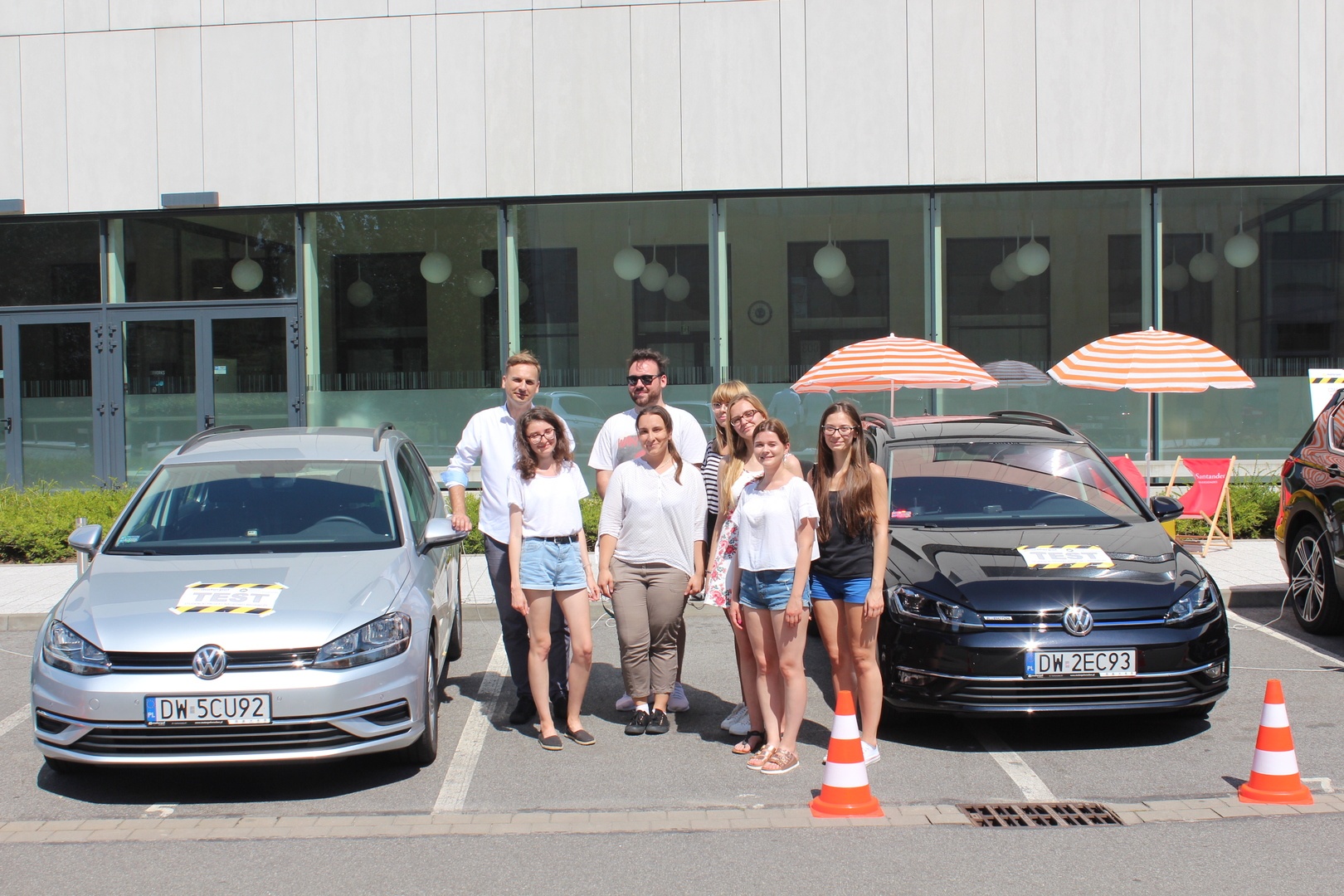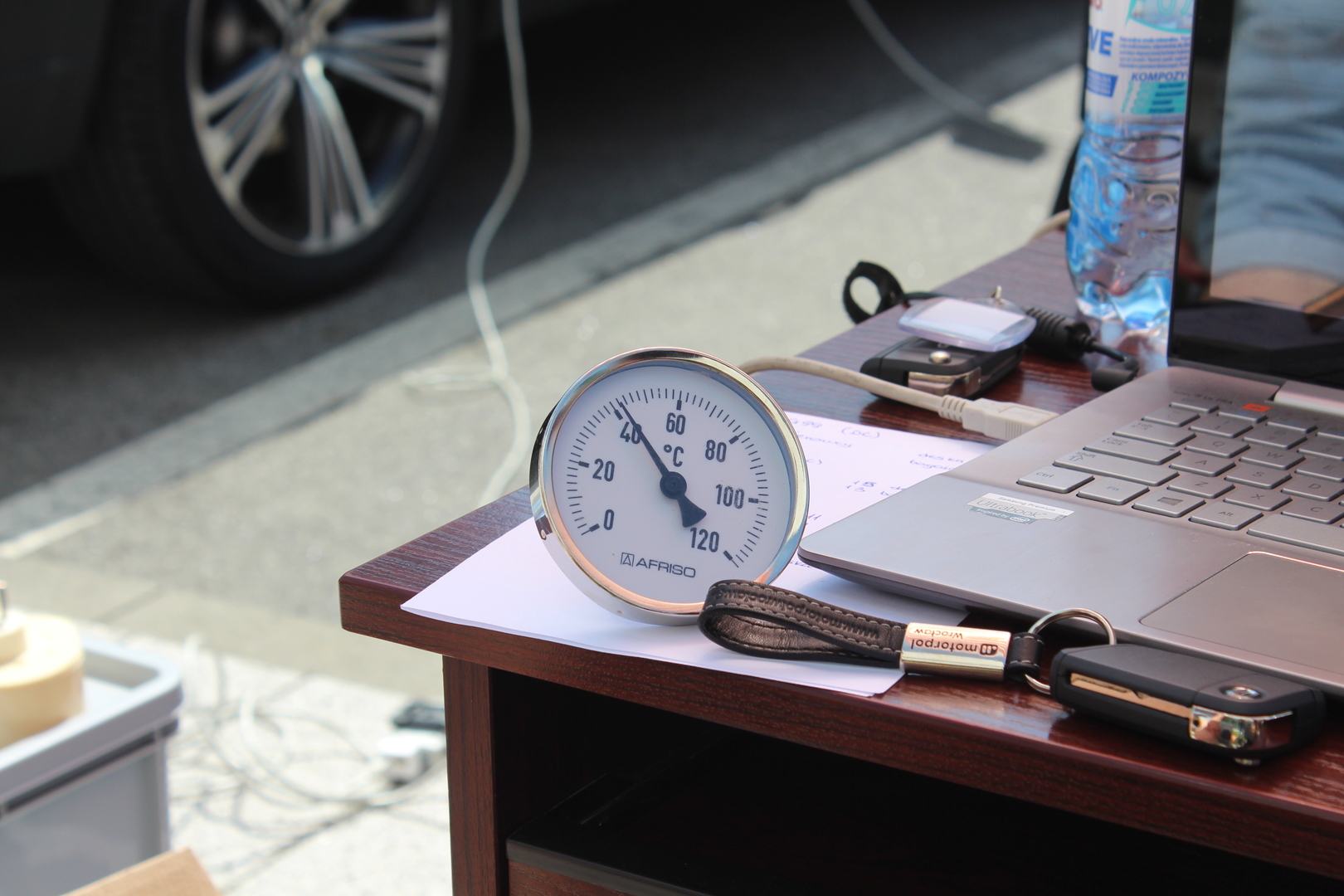YOUR BROWSER IS OUT-OF-DATE.
We have detected that you are using an outdated browser. Our service may not work properly for you. We recommend upgrading or switching to another browser.
Date: 01.07.2019 Category: general news, student activity
How fast does the temperature rise inside a car? What is the maximum value that it can reach? When do the conditions become dangerous for human health? Students from the Faculty of Environmental Engineering tried to answer these questions during the experiment named "Heat in the car".
 The experiment was conducted on Wednesday, June 26, when thermometers indicated over 35 degrees Celsius in the shade. Four different cars were placed in the square in front of building D-21 - two black ones, one white, and one silver - and the students checked how the size of the car and the colour of its body influenced the rise in the temperature of its closed interior.
The experiment was conducted on Wednesday, June 26, when thermometers indicated over 35 degrees Celsius in the shade. Four different cars were placed in the square in front of building D-21 - two black ones, one white, and one silver - and the students checked how the size of the car and the colour of its body influenced the rise in the temperature of its closed interior.
- During the hot summer months, there are more and more reports of children or animals being left in a hot car. In such cases, we usually hear an explanation that it was "just for a moment". That was why our students decided to check how fast the temperature in vehicles standing in the sun rises and what extremes it reaches - says Elżbieta Niemierka, a PhD student at the Faculty of Environmental Engineering.
The tests were carried out by means including an extensive measurement system featuring computer data recording, portable temperature recorders, and thermographic cameras.
The sensors were mounted at the height of the driver's neck and ankles, in a child seat on the back seat of the car, on the dashboard, and in the boot, which might turn out to be the chilliest place in the vehicle. In addition, we have sensors that inform us about thermal comfort and we also measure the temperature outside - explains the PhD student.
 The measurement results were recorded with digital temperature and humidity recorders, a computer measurement and recording system, and two internal comfort measurement systems. From time to time, the students also took thermal imaging photos of each car’s dashboard and measured the temperature of the cars’ dashboards and roofs using contact temperature sensors.
The measurement results were recorded with digital temperature and humidity recorders, a computer measurement and recording system, and two internal comfort measurement systems. From time to time, the students also took thermal imaging photos of each car’s dashboard and measured the temperature of the cars’ dashboards and roofs using contact temperature sensors.
The measurements began at about 10 a.m. and were conducted until 2 p.m. A dozen or so minutes after the beginning of the experiment, the temperature of the cars’ bodies had reached almost 50 degrees Celsius, and after three hours, the thermometers placed inside the cars indicated about 50 degrees Celsius.
- The highest temperature, 61.1 degrees Celsius, was recorded in the large black car, while inside the other cars it was about 58 degrees Celsius. It turned out that it’s not only the size of the vehicle and the colour of its body that matter, but also the size of glazed surfaces - points out Ms Niemierka.
The occurrence of conditions hazardous for adults, children, and animals staying inside cars being warmed up by the sun will be determined based on the results.
The cars were made available for the purpose of the tests by the company Motorpol Wrocław.
Our site uses cookies. By continuing to browse the site you agree to our use of cookies in accordance with current browser settings. You can change at any time.